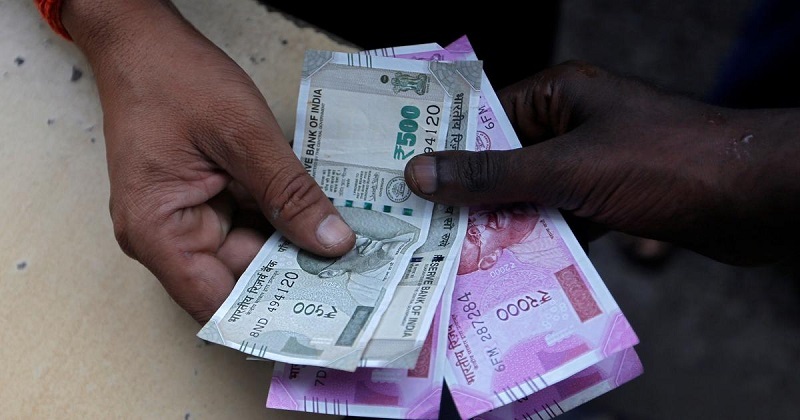
Mumbai- With states after states competing to offer freebies, a report has suggested that the Supreme Court-led panel could cap such welfare schemes at 1 per cent of the state’s GDP or 1 per cent of its own tax collection.
Citing the examples of just three states, a report penned by Soumya Kanti Ghosh, the group chief economic adviser to State Bank of India, said annual pension liabilities of the poor states of Chhattisgarh, Jharkhand and Rajasthan are estimated at ₹ 3 lakh crore.
When looked in relation to these states own tax revenue, pension liabilities are quite high for Jharkhand, Rajasthan and Chhattisgarh at 217, 190 and 207 per cent respectively.
While for states contemplating the change, it would be as high as 450 per cent of own tax revenue in case of Himachal Pradesh, 138 per cent of own tax revenue in case of Gujarat and 242 per cent of own tax revenue for Punjab, which is also planning to revert to the old pension system wherein the beneficiaries pay nothing.
Ghosh also points out that according to the latest available information, the off-budget borrowings of states, which are loans raised by state-owned entities and guaranteed by the states, have reached around 4.5 percent of GDP in 2022 and the extent of such guarantees have achieved significant proportion of GDP for various states.
The report suggests that the apex court panel fix a band, say 1 per cent of GSDP or 1 per cent of state own tax collections or 1 per cent of state revenue expenditure for these welfare schemes, he says.
Such guarantee amount is significant at 11.7 per cent of GDP for Telangana, 10.8 per cent for Sikkim, 9.8 per cent for Andhra, 7.1 per cent for Rajasthan, and 6.3 per cent for UP. While the power sector accounts for almost 40 per cent of these guarantees, other beneficiaries include sectors like irrigation, infrastructure development, food and water supply.
On the cost of the election promises made by various political parties in the poll-bound states as percentage of revenue receipts and own tax revenue of these states it is 1-3 and 2-10 in Himachal 5-8, and 8-13 in Gujarat respectively.
The unfunded pension liabilities of the state which have gone back to the old pension scheme or pay as you go scheme, or planning to do so as percentage of own tax revenue, it’s a staggering 450 for Himachal, 138 for Gujarat, 207 for Chhattisgarh, 190 for Rajasthan, 217 for Jharkhand and 242 for Punjab.
The combined liabilities of the states which have reverted to the old pension scheme/or have promised to do so stood at ₹ 3,45,505 crore in FY20 and the same will go up as percentage of GSDP of Chattisgarh to 1.9 and and incremental burden of 60,000 crore from ₹ 6,638 crore in FY20.
For Jharkhand it was ₹ 6,005 crore and will be 1.7 per cent of GSDP and will increase by ₹ 54,000 crore; Rajasthan ₹ 20,761 core, 6 per cent and will jump by ₹ 1.87 lakh crore; Punjab – ₹ 10,294 crore, 3 per cent and will rise by ₹ 92,000 crore, Himachal-Rs 5,490 crore, 1.6 per cent of GSDP and will rise by ₹ 49,000 crore and for Gujarat the pension burden was ₹ 17,663 crore in FY20 and will jump to 5.1 per cent of GDP and will rise by 1.59 lakh crore.
When the freebies announced by the states in FY23 are compared to percentage of the each of the state’s GDP and revenue receipts and own tax revenue, they are more staggering.
Quoting from a recent RBI paper on financial assistance/cash transfers, utility subsidies, loan or fee waivers and interest free loans announced by the states in their latest budgets, estimate expenditure on freebies range from 0.1-2.7 per cent of GSDP for different states. The freebies have exceeded 2 percent of GSDP for some of the highly indebted states such as Andhra and Punjab.
Follow this link to join our WhatsApp group: Join Now
Be Part of Quality Journalism |
Quality journalism takes a lot of time, money and hard work to produce and despite all the hardships we still do it. Our reporters and editors are working overtime in Kashmir and beyond to cover what you care about, break big stories, and expose injustices that can change lives. Today more people are reading Kashmir Observer than ever, but only a handful are paying while advertising revenues are falling fast. |
| ACT NOW |
| MONTHLY | Rs 100 | |
| YEARLY | Rs 1000 | |
| LIFETIME | Rs 10000 | |










